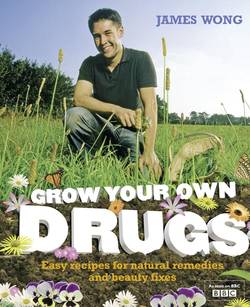Читать книгу Grow Your Own Drugs: A Year With James Wong - James Wong - Страница 16
B It’s clay soil
ОглавлениеWhen the tiny particles of clay meet water, they stick together, making this soil clumpy and heavy. This makes it far superior to sandy soil in terms of its excellent water- and nutrient-retaining properties, but its dense, pastelike consistency can restrict the flow of air to, and the uptake of nutrients by, the plant’s roots. Many half-hardy plants that do not survive the winter are not necessarily the victims of the cold itself but instead succumb to the stifling effects of waterlogged soil, which cause bacterial or fungal infections that rot the roots. Clay soils also have a tendency to bake rock hard in hot, dry summers, just like pottery in a kiln, leaving your plants struggling to grow in what is almost a natural concrete.
Just like sandy soil, the addition of organic matter every year will greatly improve the condition of heavy clay soil. Here the fibrous texture of organic materials like compost or leaf litter opens up the soil structure and allows air in. Additionally, digging in some grit or horticultural sand will break up the heavy clods to improve drainage. (Whatever you do, though, please don’t use builder’s or beach sand, which contain plant-damaging lime or salt.) You’ll find that the soil becomes freer-flowing and less likely to waterlog, with a texture more like the topping of an apple crumble than dense cookie dough, which gives plants a far better chance.
